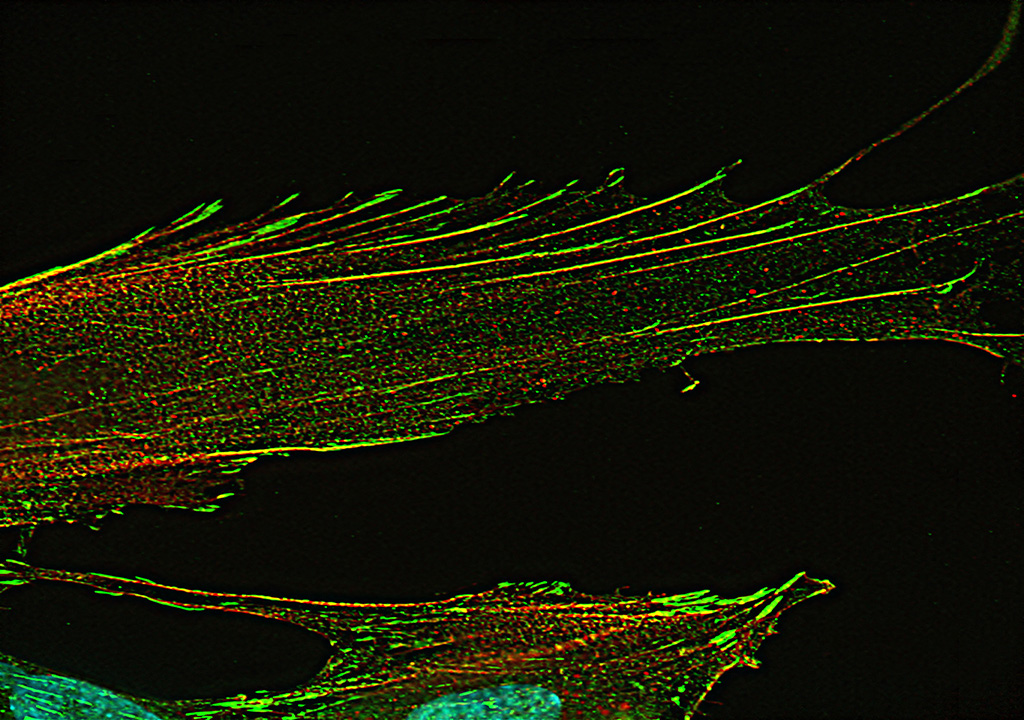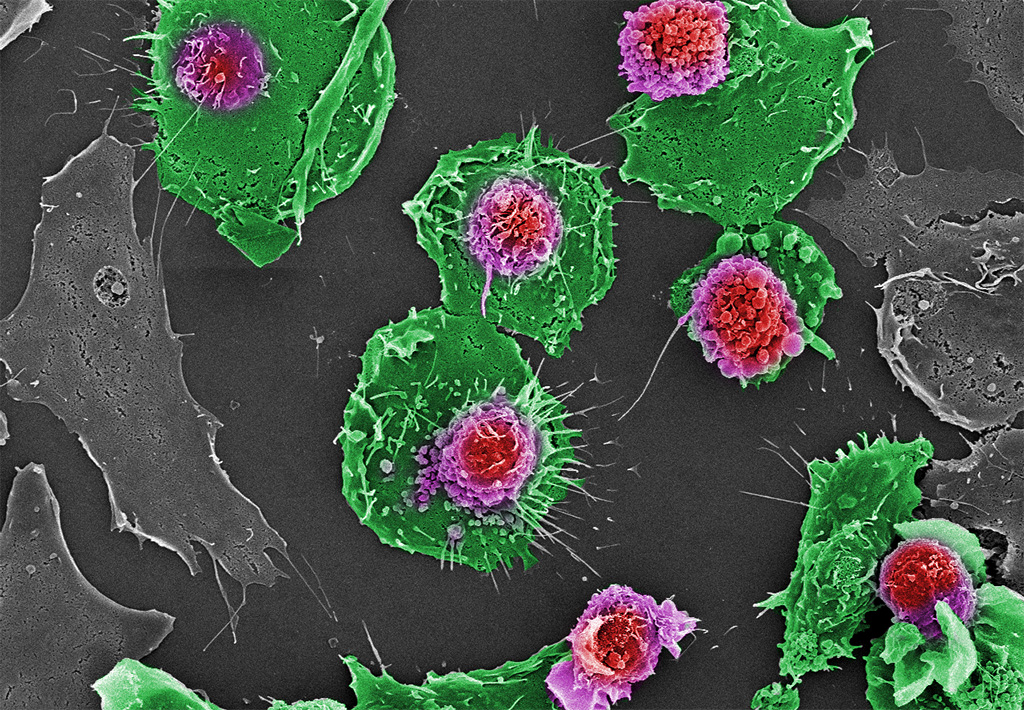
One Reproductive Health Research Group photography takes home top prizes
"Reaching out for Pregnancy and Labour" (above) named Viewer's Choice Winner in the 2019 USask Images of Research Competition
Above: Reaching Out for Pregnancy and Labour, by Ayomikun Olaloku (an undergraduate student working in Daniel MacPhee's lab) was named Viewer's Choice Winner, garnering the greatest number of votes in online voting. The following description accompanied Ayo's photo:
"How uterine contractions develop and are controlled during pregnancy and labour is poorly known, but understanding uterine muscle growth during pregnancy and its contributions to uterine contractions at labour are critical first steps. Abnormal uterine contractions can lead to poor health and/or survival of the newborn in humans and domestic animals. In preparation for labour, uterine muscle cells dramatically extend and enlarge with extensive actin filament growth and remodeling at cell-external environment anchors called focal adhesions. In this image of uterine muscle cells, fluorescence microscopy illuminates the extending growth of actin (red) and the role of zyxin (green) in actin maintenance (yellow) at focal adhesions. Such research could equip clinicians with knowledge to understand and predict irregular labour processes. (Funder: Natural Sciences and Engineering Research Council)"
Ayo's research is described in more detail in the WCVM Today article HSPB1: small protein a potential pregnancy powerhouse.
Awang Hazmi Awang Junaidi (former PhD student in in Ali Honoramooz's lab) was also awarded runner-up in the More than Meets the Eye jury-judged category with his image Looks Can Be Deceiving (below). Awang has also taken home awards in previous competitions, with Bloom Where You are Planted (winner of 2017 Viewer's Choice and More than Meets the Eye categories) and The Germinator (2016 runner up, Viewer's Choice).

"The highlighted structures may first resemble floating lotus leaves and flowers, but they are actually single cells in a Petri dish. This scanning electron microscopy image shows cultured gonocytes, a population of male germline stem cells found in the newborn testis, which after maturity can ultimately give rise to sperm cells. Like lotuses, gonocytes “float” on top of their feeder cells and develop cytoplasmic extensions to reach out to other cells and move around in this in vitro “pond” (microenvironment). In certain ancient cultures and beliefs, lotuses symbolize fecundity and fertility. What a similarity! Our research can provide valuable insights into the role of gonocytes in male fertility and the potential effect of environmental pollutants on future infertility. (Funders: NSERC)"

